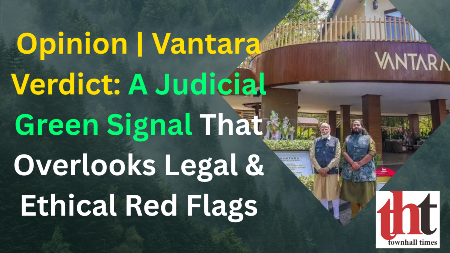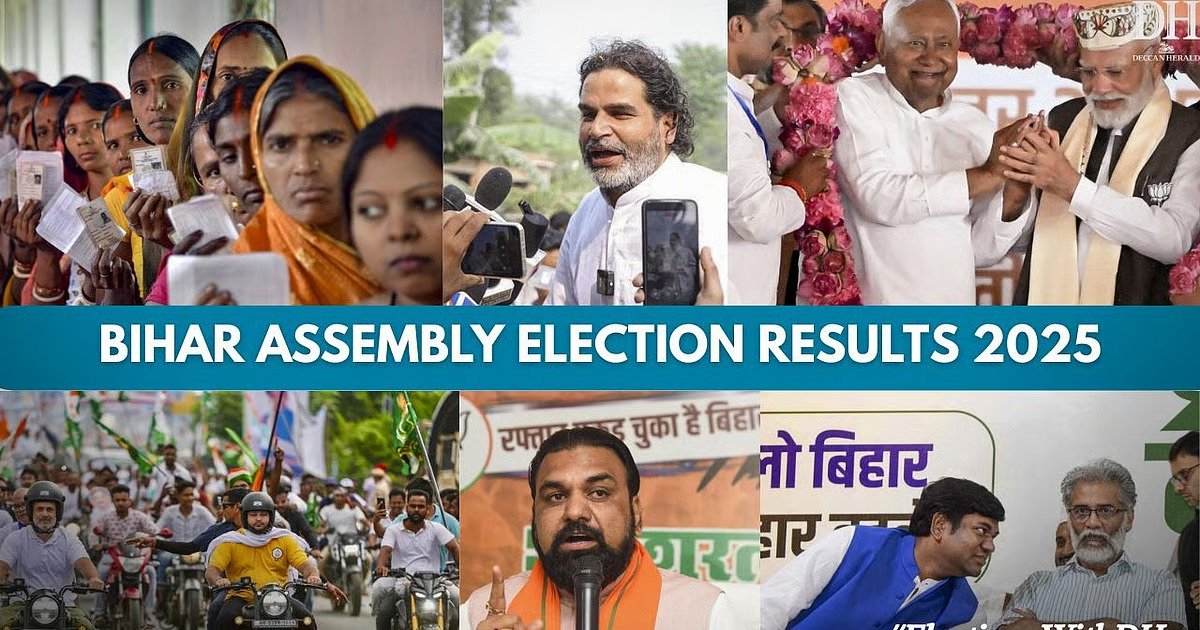On September 15, the Supreme Court formally closed all complaints related to the acquisition of animals by Vantara—the so-called Greens Zoological Rescue and Rehabilitation Centre run by the Reliance Foundation, backed by the Ambani family. Based on the report of a Special Investigation Team (SIT) led by former Supreme Court judge Justice J. Chelameswar, the Court concluded there was “no foul play” and that the acquisition of animals, including elephants, was “within the regulatory mechanism.”
But beyond the courtroom’s finality, lies an uncomfortable truth: this judgment may have overlooked serious questions of law, transparency, and public interest—all buried under layers of legal compliance and a carefully curated narrative of “world-class conservation.”
Allegations Ignored or Underexplored?
Several serious allegations had been raised against Vantara and the Ambani family’s involvement:
-
Illegal acquisition and transfer of elephants, including those from temples and forest areas, allegedly without due process or adequate scrutiny.
-
Bypassing the Central Zoo Authority (CZA) and wildlife protection norms by operating under the banner of a “rescue and rehabilitation” centre rather than a conventional zoo—thereby evading stricter controls.
-
Importing exotic animals from abroad in questionable circumstances, raising concerns about compliance with CITES (Convention on International Trade in Endangered Species) and Indian customs laws.
-
Allegations that Vantara was functioning more like a private zoological showcase, intended to serve brand-building and elite tourism rather than any genuine conservation or rescue agenda.
Civil society groups, wildlife activists, and legal experts had argued that these practices may constitute a systematic circumvention of India’s wildlife laws, and called for a transparent, public investigation.

What the SIT Found — And What It Missed
The SIT report, submitted in sealed form, was not made public. While the Court accepted it as conclusive, its observations were only read out briefly during the hearing.
According to Justice Pankaj Mithal, the SIT found that the acquisition of animals was done in “regulatory compliance”. The Court declared itself satisfied and ordered the matter closed, refusing to entertain further objections.
But this raises troubling issues:
-
Why was the report kept confidential, especially when it concerns public interest, wildlife protection, and compliance with national and international law?
-
If everything was above board, why oppose making the report public? Senior Advocate Harish Salve, representing Vantara, argued that revealing the full report could fuel a negative “narrative” and even lead to international scrutiny in outlets like the New York Times or Time Magazine. This, ironically, suggests a fear of public accountability.
-
More crucially, no independent cross-examination of the SIT’s findings was allowed—effectively turning a judicial inquiry into a one-sided validation exercise.
The Court’s Dismissal of Ongoing Concerns
Perhaps most telling was the Court’s dismissal of a pending intervention application (IA) concerning the removal of a temple elephant. The counsel attempted to raise the issue, but Justice Mithal flatly refused to hear it, saying:
“If the acquisition of an elephant is in accordance with the law, what is the difficulty? You maintain your elephants in the temple and use it for procession… Allow certain good things to happen to the country.”
Such remarks, though perhaps well-intentioned, trivialize the deep cultural, legal, and ecological issues surrounding elephant transfers—especially when they involve religious institutions, local communities, and state forest departments.

A Missed Chance to Define Law in the Age of Corporate Conservation
The larger issue here is not merely about whether laws were technically followed. It’s about whether our current laws are adequate and resilient enough to withstand the influence of ultra-wealthy private entities in the wildlife and conservation space.
By allowing Vantara to operate in a legal grey zone—not quite a zoo, not quite a sanctuary, not fully under public regulation—the state has effectively outsourced conservation to private hands. Yet, the rules governing such private “rescue” centres remain vague and poorly enforced.
This judgment, rather than strengthening regulatory clarity, leaves a dangerous precedent: that with enough resources and influence, one can operate outside the spirit of wildlife protection laws, so long as procedural paperwork is in order.
https://www.amazon.in/gp/bestsellers/electronics/?utm_source=chatgpt.com
Conclusion: Conservation Cannot Be Privatized Without Accountability
The Supreme Court’s acceptance of the SIT report and dismissal of further objections has given a clean chit to Vantara. But it has also shut the door on legitimate questions that go to the heart of how wildlife is protected—or commodified—in India.
Transparency, not secrecy, should define wildlife governance. And while private participation in conservation can be valuable, it must operate within a clearly defined, publicly accountable legal framework—not behind closed doors, sealed reports, and vague assurances of “compliance.”
In the end, this is not just about elephants or exotic animals. It is about whether the rule of law in India is strong enough to regulate power—especially when that power wears the mask of philanthropy.
-
#SupremeCourtIndia -
#SCJudgment -
#SITReport -
#WildlifeJudgment -
#JudicialAccountability -
#IndianJudiciary -
#RuleOfLaw
-
#Vantara -
#RelianceFoundation -
#WildlifeConservation -
#ElephantRights -
#AnimalWelfareIndia -
#ZooEthics -
#PrivateZoo -
#CaptiveElephants
-
#VantaraControversy -
#AmbaniZoo -
#WildlifeLawsIndia -
#CorporateConservation -
#AccountabilityMatters -
#TransparencyInConservation
-
Vantara Supreme Court judgment
-
Vantara animal acquisition case
-
Vantara SIT report
-
Reliance Foundation zoo controversy
-
Vantara elephants legal case
-
SC verdict on Vantara
-
Private zoos in India legality
-
Ambani wildlife project
-
Wildlife Protection Act Vantara case
-
Ethical concerns about Vantara zoo
-
Vantara elephant transfer issue
-
Supreme Court on Vantara SIT findings
-
Harish Salve Vantara case
-
Conservation vs commercialization in India
-
India’s wildlife law and private institutions











Leave a Reply